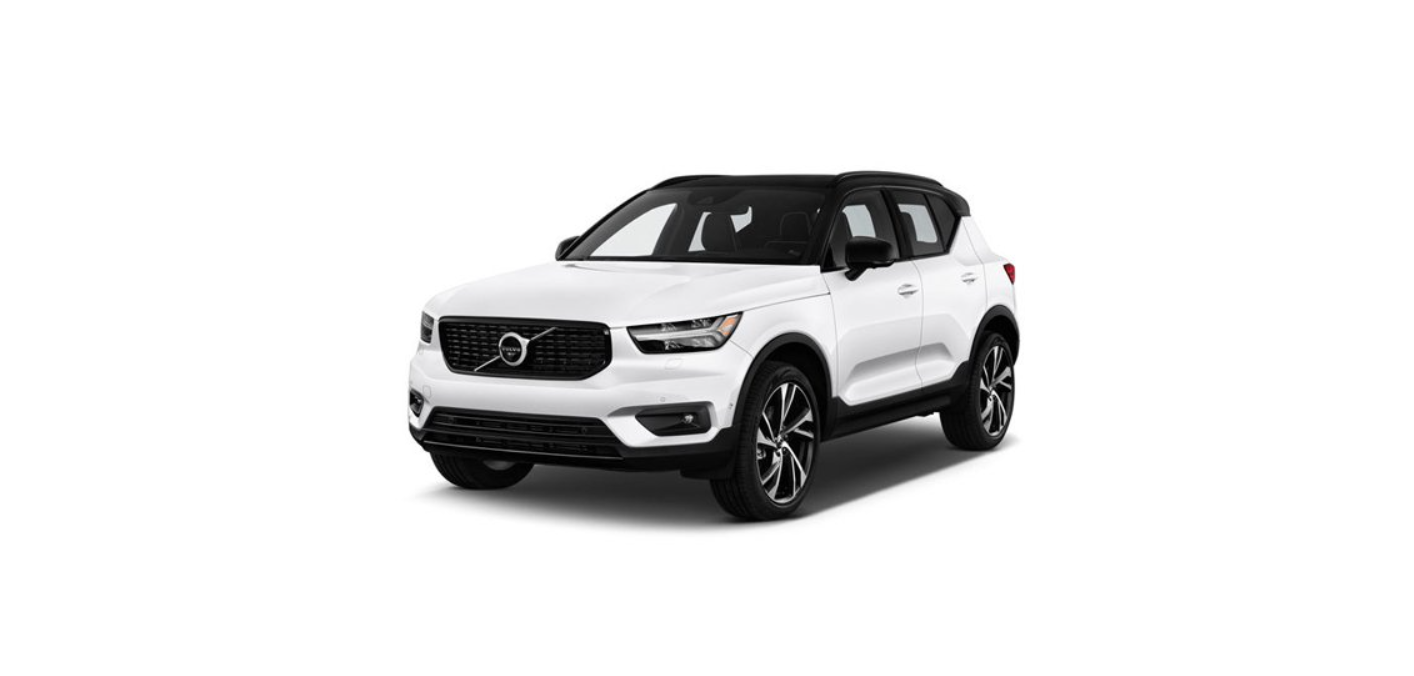2022 Volvo XC40 Your Volvo Drive Modes
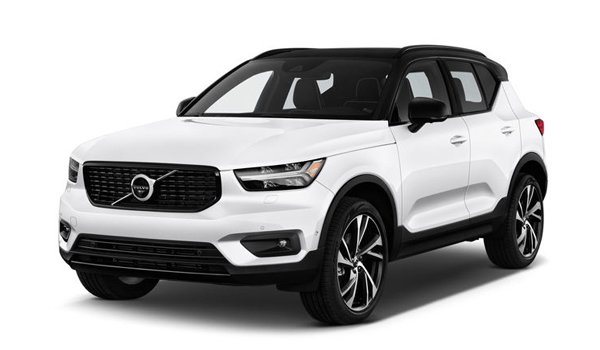
Regenerative braking

The battery symbol is shown in the driver display when the car is generating power for the battery.
The function is available in all drive modes together with gear position D or M.
Activating brake regeneration
Brake regeneration is activated by gentle pressure on the brake pedal or during engine braking.
Regeneration increases during engine braking when manual gearshift mode M is selected.
Drive modes
- Steering
- Engine/gearbox/all-wheel drive
- Brakes
- Driver display
- Start/stop function
- Climate settings
Select the drive mode adapted for the current driving conditions. Remember that not all drive modes are available in all situations.
Selectable drive modes
When the car starts, it is in Comfort mode and the start/stop function is activated. The drive mode can be changed when the car has been started, e.g. to the Individual mode. When the Individual mode is selected, it is possible to make adjustments for specific preferences, e.g. to show the tachometer.
Comfort
The Comfort mode is the car’s normal mode. These settings mean that the car feels comfortable, the steering is light, the shock absorption is soft and the body’s movement is smooth. This drive mode is the certification mode for carbon dioxide emissions.
Eco
- Adapt the car for more energy-efficient and environmentally-conscious driving with the Eco mode.
The drive mode means, for example, that the Start/Stop function is activated and the output of certain climate settings is reduced.
When driving in Eco mode, the driver display shows an eco-meter that indicates in real time how economical your driving is.
Off-Road
- Maximize the car’s traction when driving in difficult terrain and on poor roads.
- The steering is light, and the all-wheel drive operation and low-speed function with hill descent control (HDC) are activated. Start/Stop function is deactivated.
- The drive mode can only be activated at low speeds and the speedometer shows the range for speed limitation. If this speed is exceeded, Off-Road mode is suspended and another drive mode is activated.
- In the Off-Road mode, the driver display has a compass between the speedometer and tachometer.
The driving mode is not designed to be used on public roads.
Dynamic
- Dynamic mode means that the car has sportier characteristics and a faster response to accelerating.
- The gear changes become faster and more distinct, and the gearbox prioritizes a gear with greater traction.
- Steering response is faster and shock absorption is harder which means that the body follows the roadway in order to reduce roll during cornering.
- Start/Stop function is deactivated.
- The Dynamic mode is also available in the Polestar Engineered version.
Individual
- Adapting a drive mode according to individual preferences.
- Select a drive mode to start from, and then adjust the settings according to the desired driving characteristics. These settings are saved in the active driver profile and are available each time the car is unlocked with the same key.
- An individual drive mode is only available if it is first activated in the center display.
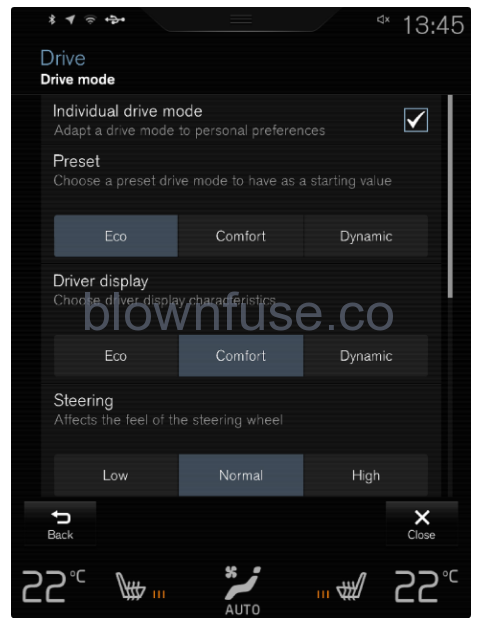
- Settings view for individual drive mode.
- Press Settings in the top view.
- Press and select Individual Drive Mode.
- In Presets, select a drive mode to start from Eco, Comfort, Dynamic, or Polestar Engineered.
- Possible adjustments apply to settings for:
- Driver Display
- Steering Force
- Powertrain Characteristics
- Brake Characteristics
- Suspension Control
- ECO Climate
- Start/Stop.
Changing drive mode
Change the drive mode using the button in the center console.
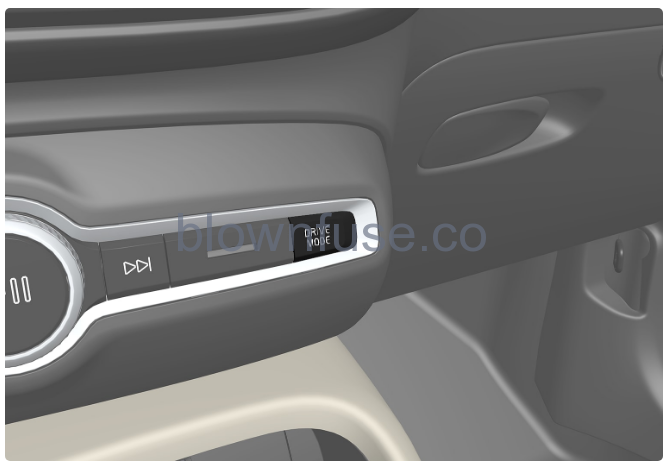 Press the DRIVE MODE button.
Press the DRIVE MODE button.A pop-up menu is opened in the center display with the active drive mode highlighted.
Select the drive mode in one of two ways:
- Tap the desired drive mode directly on the touchscreen to select and activate the drive mode.
- Press the DRIVE MODE button again to move the cursor to the desired drive mode. The selected drive mode is activated after a short delay.
Drive mode Eco
- Drive mode Eco can help you with more eco-friendly driving, with greater fuel economy.
- Use this drive mode to save fuel and the environment.
- The following properties are adapted for Eco mode:
- Gearbox gearshift points.
- Engine management and response from the accelerator pedal.
- The Eco Coast freewheel function is activated and engine braking is deactivated when the accelerator pedal is released at speeds between 65 and 140 km/h (40 and 87 mph).
- Some of the climate control system’s settings work at reduced power or are deactivated.
- The driver display shows information in an ECO gauge which facilitates environmentally-conscious and fuel-efficient driving.
Free-wheel function Eco Coast
- The freewheel function Eco Coast means in practice that engine braking ceases, meaning in turn that the car’s kinetic energy is used to freewheel for longer distances. When the driver releases the accelerator pedal the gearbox is automatically disengaged from the engine whose speed is reduced to idling speed with reduced consumption.
- The function is best used where it is possible to freewheel a long way e.g. roads with a slight downhill gradient or when there is a predictable speed reduction to freewheel into a zone with a lower speed limit.
Activating the freewheel function
The function is activated when the accelerator pedal is fully released, in combination with the following parameters:
- Drive mode Eco is activated.
- The gear selector is in the D position.
- Speed within the range of approx. 65-140 km/h (40-87 mph).
- The road’s downhill gradient is not steeper than approx. 6%.
The driver display shows COASTING when the freewheel function is being used.
Limitations
The freewheel function is not available if
- the engine and/or gearbox are not at normal operating temperature
- the gear selector is moved from the D position to the manual position
- if the speed is outside the range of approx. 65-140 km/h (40-87 mph)
- the road’s downhill gradient is steeper than approx. 6%
Deactivating and switching off the freewheel function
In certain situations, it may be desirable to deactivate or switch off the function in order to use engine braking. Examples of such situations may be on steep downhill gradients or before an imminent overtaking maneuver – in order to be able to do it in the safest way possible.
Deactivate the freewheel function as follows
- actuate the accelerator or brake pedal
- move the gear selector to manual position
Switch off the freewheel function as follows
- change drive mode
- switch off drive mode Eco in the function view.
Even without the freewheel function, it is possible to freewheel for short distances. This, in turn, reduces consumption. However, for the best fuel economy, it is better to have the freewheel function activated and be able to freewheel for longer distances.
Cruise control Eco Cruise
When using the cruise control in the Eco drive mode, the car’s acceleration and deceleration will be lower compared to other drive modes, which enables further fuel savings. This means that the car’s speed can be slightly above or below the set speed.
- On a smooth road, the car’s speed can deviate from the set speed when the cruise control is active and the car free-rolls.
- On a steep uphill slope, the car’s speed drops until a downshift is made, then reduced acceleration starts in order to achieve the set speed.
- On a downhill slope where the car free-rolls, the car’s speed can be slightly above or below the set speed. The function uses normal engine braking to maintain the set speed. The foot brake is also used if necessary.
Eco gauge in the driver’s display
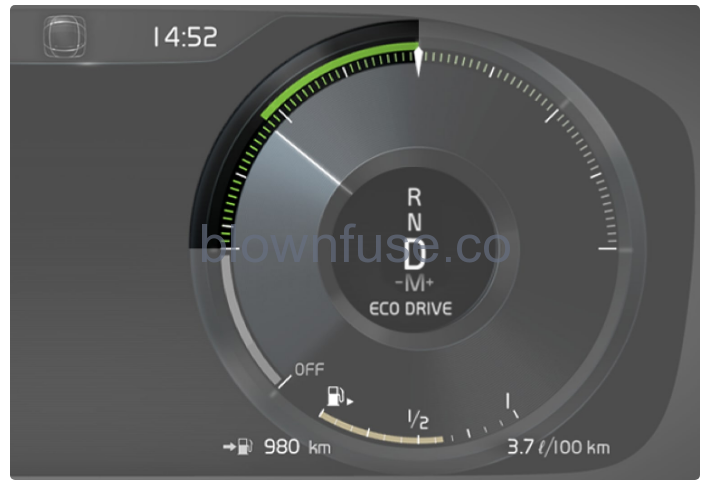
The ECO gauge indicates how fuel-efficient the driving is:
- With fuel-efficient driving, the gauge shows a low value with the pointer in the green zone.
- With non-fuel-efficient driving, e.g. during heavy braking or heavy acceleration, the gauge shows a high value.
The ECO gauge also has an indicator to show how a reference driver would drive the car under the same driving conditions. This is indicated with the short pointer on the gauge.
ECO climate control
In the Eco drive mode, eco climate control is activated automatically in the passenger compartment in order to reduce energy consumption.
When the Eco drive mode is activated, several parameters in the climate control system’s settings are changed, and several electricity consumer functions are reduced. Certain settings can be reset manually, but full functionality is only regained by switching off Eco drive mode or adapting Individual drive mode with full climate functionality. In the event of difficulties due to misting, press the button for max. defroster which has normal functionality.
The Eco mode is deactivated when the engine is switched off, and it must therefore be activated each time the engine is started. The driver display shows ECO when the function is activated.
Selecting Eco drive mode in the center display function view
Press the Driving Mode ECO button to activate or deactivate the function.

An indicator in the button illuminates when the function is activated.
Launch function
Activate Launch
- Make sure the car is stationary and the wheels are pointing straight forward.
- Move to gear position D.
- Depress the brake pedal fully.
- Then fully depress the accelerator pedal.
- Release the brake pedal within 2 seconds.
If the Launch function does not work, wait a few minutes and let the drivetrain cool down to a working temperature before retrying.
Low-speed control
- The low-speed control function (LSC) facilitates and improves traction for driving off-road and on slippery surfaces, such as with a caravan on grass or a boat trailer on a launch ramp.
- In a car with a drive mode button, the function is included in the Off-Road drive mode.
- The function is adapted for off-road driving and driving with a trailer at low speed, up to approx. 40 km/h (25 mph).
- Low-speed control prioritizes low gears and traction. If the car is all-wheel drive, the motive force is distributed evenly in order to provide as good traction as possible on all wheels and to reduce the risk of wheel spin.
- The accelerator pedal is less responsive in order to facilitate traction and speed control at low speed.
- The function is activated together with hill descent control, (HDC) which means that speed down steep hills can be controlled with the accelerator pedal, reducing the need to use the brake pedal.
- The system facilitates a low and even speed while driving on steep downhill gradients.
Note
When LSC with HDC is activated, the feel of the accelerator pedal and engine response is changed.
Note
The driving mode is not designed to be used on public roads.
The function is deactivated when driving at higher speeds and must be reactivated at a lower speed if required.
Activating and deactivating low-speed control
Select low-speed driving in the center display function view
Press the Hill Descent Control button to activate or deactivate the function.

An indicator in the button illuminates when the function is activated.
This function is disabled automatically when the engine is switched off.
Note
The function is deactivated when driving at higher speeds and must be reactivated at a lower speed if required.
Hill descent control
In a car with a drive mode button, the function is included in the Off-Road drive mode.
Hill descent control is adapted for off-road driving at low speeds and facilitates driving on steep downhill gradients with difficult surfaces. The driver does not need to use the brake pedal, but can instead focus on steering.
HDC does not work in all situations but is designed merely as a supplementary aid.
The driver always bears ultimate responsibility for ensuring that the vehicle is driven safely.
Function
- Hill descent control allows the car to roll at inching speed both forward and backward, assisted by the brake system. The speed can be increased by using the accelerator pedal. When the accelerator pedal is then released the car slows back down to crawling speed, regardless of the gradient of the hill, and without the need for the foot, brake to be used. The brake lights are switched on when the function is operating.
- The driver can brake and reduce crawling speed, or stop the car at any time by using the foot brake.
- The function is activated together with low-speed control (LSC) which facilitates driving and improves traction for driving off-road and on slippery surfaces. The systems are designed for use at low speed, up to approx. 40 km/h (25 mph).
Points to remember when driving with HDC
- If the function is disabled while driving on a steep downhill gradient, the braking effect will gradually decrease.
With automatic gearbox
- HDC can be used in gear position D, R, and with 1st or 2nd gear with manual gear changing.
- It is not possible to change to 3rd gear or higher with manual gear changing.
With manual gearbox
- HDC only brakes in 1st gear or with reverse gear (R). There is no active braking in higher gears even though the function is not deactivated until approx. 40 km/h (25 mph).
When LSC with HDC is activated, the feel of the accelerator pedal and engine response is changed.
The driving mode is not designed to be used on public roads.
The function is deactivated when driving at higher speeds and must be reactivated at a lower speed if required.
Activating and deactivating hill descent control
Selecting hill descent control in the center display function view
Hill descent control only works at low speeds.
Press the Hill Descent Control button to activate or deactivate the function.

An indicator in the button illuminates when the function is activated.
This function is disabled automatically when the engine is switched off.
Note
The function is deactivated when driving at higher speeds and must be reactivated at a lower speed if required.
All-wheel drive
- All-wheel drive (AWD) means that the car is driving all four wheels at the same time, which improves traction.
- To achieve the best possible traction, the motive force is distributed automatically to the wheels with the best grip.
- The system continuously calculates the need for torque to the rear wheels, and can immediately redistribute up to half of the motor’s torque to the rear wheels.
- All-wheel drive also has a stabilizing effect at higher speeds.
- Under normal driving conditions, the majority of power is transmitted to the front wheels.
- When stationary, the all-wheel drive is always engaged in preparation for maximum traction during acceleration.
- All-wheel drive characteristics vary depending on the selected drive mode.
